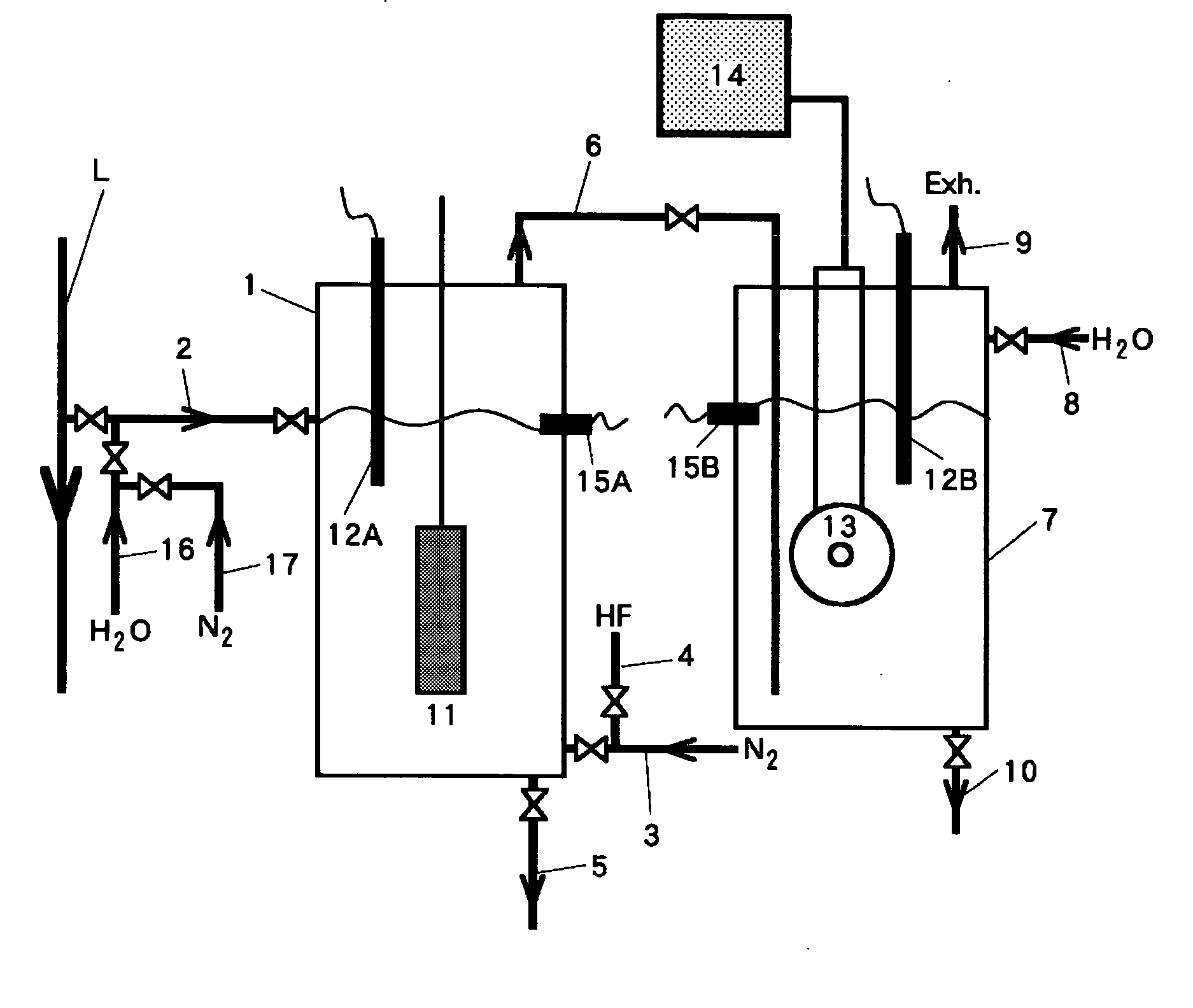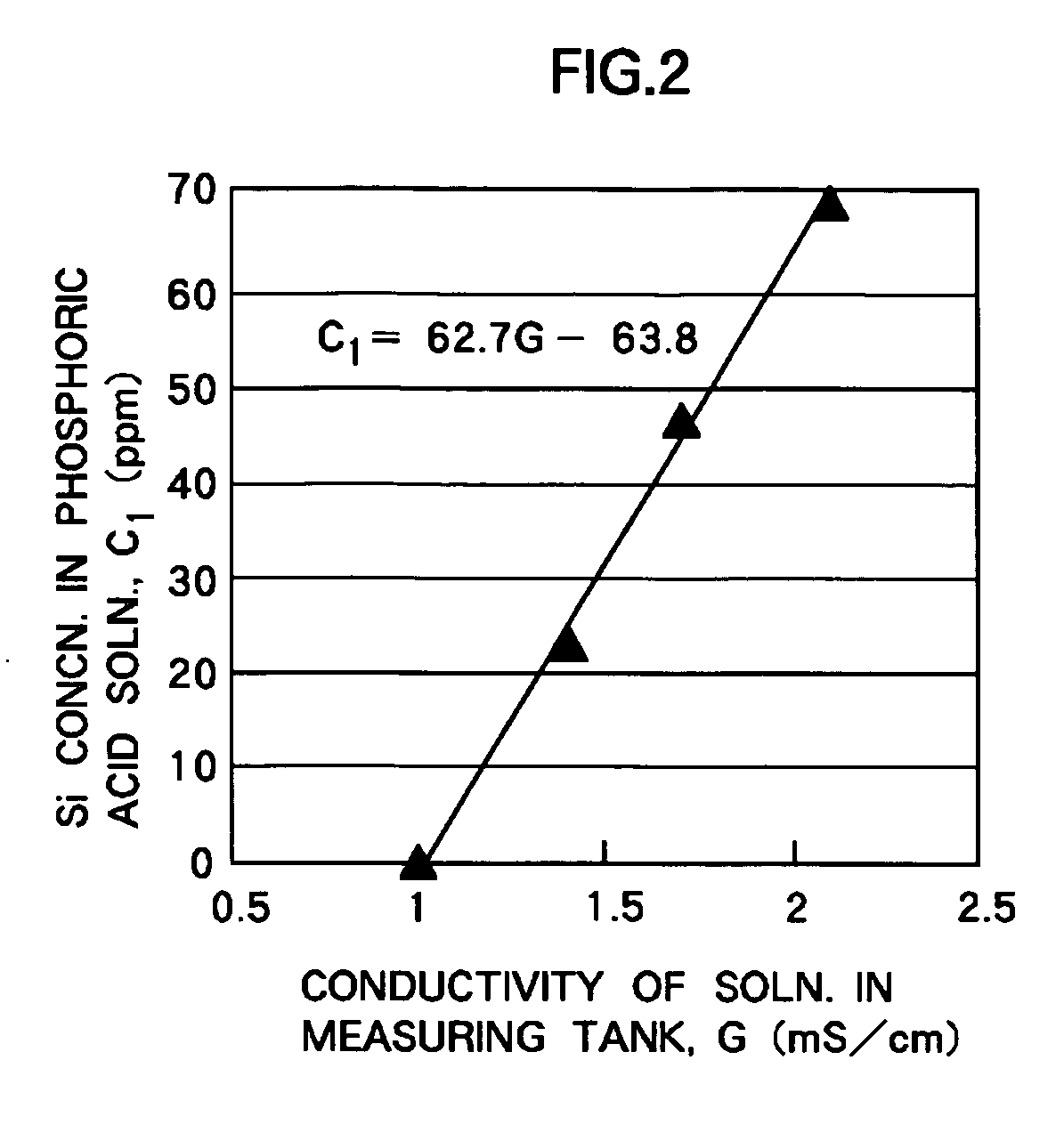Equipment and method for measuring silicon concentration in phosphoric acid solution
- Summary
- Abstract
- Description
- Claims
- Application Information
AI Technical Summary
Benefits of technology
Problems solved by technology
Method used
Image
Examples
example 1
[0041] Using experimental equipment of the construction shown in FIG. 1, four standard samples of a 85% silicic acid solution, the silicon concentrations of which were known to be 0, 23, 46 and 69 ppm, respectively, were measured for electric conductivity. The thus-obtained electric conductivities had temperature-compensated values.
[0042] Portions (350 mL) of the phosphoric acid solution samples of the above-described concentrations were each separately fed to the reaction tank 1 and then heated by the heater 11 to raise its temperature to 130° C. In a similar manner as described above, a 50% hydrofluoric acid solution (2 mL) was then added to the phosphoric acid solution in the reaction tank 1 via the line 3 shown in FIG. 1 while using nitrogen gas as a carrier. Subsequently, nitrogen gas (5 mL / min) was fed via the inert gas feed line 3 to conduct bubbling for 5 minutes, so that gas is transferred from the reaction tank 1 into deionized water (400 mL) in the concentration-measurin...
example 2
[0049] Example 1 is directed to an example of a case that a heating means (for example, a heater) is arranged for the phosphoric acid solution in the reaction tank of the measurement equipment. On the other hand, this example is directed to a case that a heating means is not arranged or a heating means is not used. Using experimental equipment of a similar construction as that shown in FIG. 1, an experiment was conducted under substantially the same conditions and procedure as in Example 1. In this example, the heater 11 as a heating means for the phosphoric acid solution in the reaction tank 1 was not used. At the same time as the temperature of the phosphoric acid solution fed to the reaction tank 1 had dropped to a predetermined temperature to be described subsequently herein, a hydrofluoric acid solution was added and bubbling with nitrogen gas from the inert gas feed line 3 was initiated. The bubbling was stopped five minutes later. By conducting the above-described series of m...
PUM
| Property | Measurement | Unit |
|---|---|---|
| Temperature | aaaaa | aaaaa |
| Fraction | aaaaa | aaaaa |
| Fraction | aaaaa | aaaaa |
Abstract
Description
Claims
Application Information
 Login to View More
Login to View More - R&D
- Intellectual Property
- Life Sciences
- Materials
- Tech Scout
- Unparalleled Data Quality
- Higher Quality Content
- 60% Fewer Hallucinations
Browse by: Latest US Patents, China's latest patents, Technical Efficacy Thesaurus, Application Domain, Technology Topic, Popular Technical Reports.
© 2025 PatSnap. All rights reserved.Legal|Privacy policy|Modern Slavery Act Transparency Statement|Sitemap|About US| Contact US: help@patsnap.com



